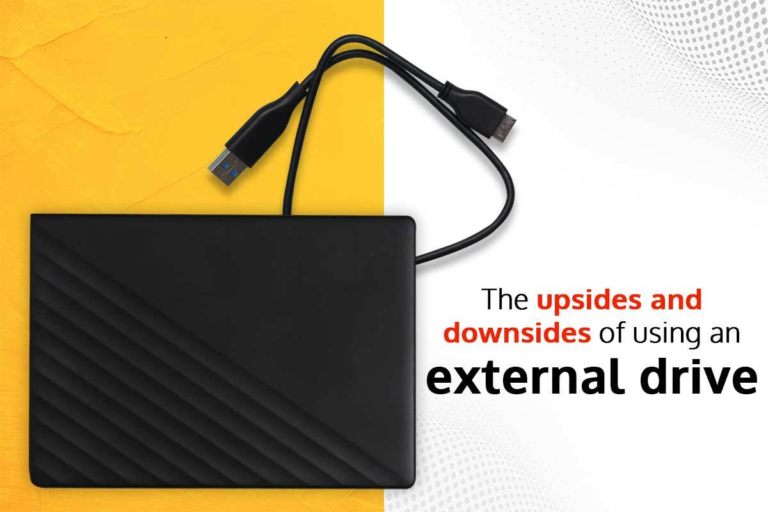In today’s digital world, data storage plays a very crucial role. Having enough digital storage space facilitates users to store different digital files, including images, documents, apps & utilities, audio and video files, etc. According to Go Nitro, there are numerous benefits of storing data electronically. For instance, storing digital files allows users to collaborate with others more conveniently. Besides this, it also results in easy accessibility, i.e., users can access and retrieve any file stored digitally without hassle. Moreover, it also facilitates users to work on the go and enhance their productivity.
Thanks to the popularity of digital files and the demand for digital storage, there are numerous methods following which users can store data digitally. For instance, they can purchase storage space on a cloud platform to store important files and folders. However, even though this method of data storage has its own set of advantages, it is comparatively costlier. Another efficient method of storing digital files is using a physical storage component like an external drive. Similar to all other methods, using an external drive has its own set of advantages and disadvantages. This article will shed light on how users can access external drives on their Mac or Windows PC and cover some of the upsides and downsides of using an external drive. Let us begin:
How to Access an External Drive on a Mac or Windows PC:
macOS: Accessing an external drive on a Mac is very simple. All you need to do is plug in the device to your Mac using a USB cable and open the Disk Utility app to open the removable drive. However, there are numerous instances when an external drive does not get recognized by the device. If your Mac Mini, Studio, iMac, or MacBook won’t read external hard drive, you should try plugging the external drive into another port. Besides this, you can solve the issue by resetting your device’s NVRAM to resolve the issue.
Windows – Similar to macOS, you can conveniently access any external drive on your Windows PC by connecting it to your device, opening the “This PC” utility, and clicking on the removable drive icon. If there arise detection issues, you could try changing the ports. If the method does not work, update your device’s USB drivers, or fix the USB Root Hub.
Upsides of Using an External Drive:
- One of the biggest advantages of using an external drive is that it facilitates users to conveniently carry around data, i.e., it offers top-notch portability. It allows users to transfer massive amounts of digital data within a few minutes. Moreover, it also offers portability between different systems. For instance, all major OSs support external drives; thus, you can copy data from one OS and use it on a device running on a different OS without hassle.
- As opposed to cloud storage platforms which charge users enormous amounts of money for providing limited storage space on their platforms, external drives are cheaper and more affordable to the majority of users across the globe. The cost-per-GB of external drives is significantly lower compared to other storage forms; thus, using external drives for storing data facilitates users to save tons of money.
- The easy-to-use mechanism of external drives makes it convenient for users to store, manage, and transfer data from one device to another. All the user needs to do to connect an external drive to a system is plug it into the device’s port using a USB data cable. Moreover, the plug-and-play feature of modern external drives instantly sets up the device on any system and makes it ready for the user.
Downsides of Using an External Drive:
- Even though modern-day external drives are very compact and easy to carry around, they are more susceptible to physical damage. For instance, if you have placed an external drive inside a crowded bag, it may incur scratches or get bent. If this happens, it will render the device useless and lead to the user’s data getting lost or corrupted.
- Since external drives are physical objects, they are more prone to theft. Hence, users with an external drive must be attentive and careful while traveling with an external drive containing important files or sensitive information. Moreover, since all the data is stored locally on an external drive, users will not be able to retrieve or erase the data present on it if the drive gets stolen.
- All external drives depend on a USB cable or power adaptor to connect to a Mac or PC. Hence, if any user forgets to carry a USB cable, they will not be able to access the data present on the hard drive. Moreover, if anyone maintains numerous hard drives, their workspace may get cluttered with wires and cables.
If you are confused about whether you should use an external drive for storing data or not, refer to the pros and cons mentioned above to make a sensible decision.
